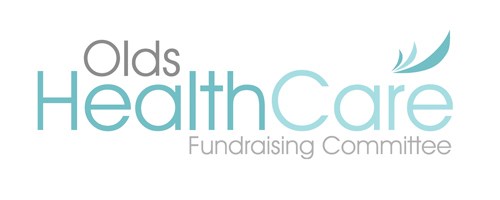Members of the Olds Health Care Fundraising Committee (OHCFC) recognize their goal of raising $300,000 may seem like a daunting one, but they say it's necessary to ensure Olds and area get the health care they need and deserve.
Members of the Olds Health Care Fundraising Committee (OHCFC) recognize their goal of raising $300,000 may seem like a daunting one, but they say it's necessary to ensure Olds and area get the health care they need and deserve.
The OHCFC announced its first annual capital campaign May 25. As reported earlier in the Albertan, the campaign began June 1 end ends May 31 next year.
The committee has already received two big donations to kick-start the campaign.
One, for $150,000, came from the estate of Mary Ellen Hunt. The other, for $25,000 to go toward purchase of a new labour and delivery bed, came from the estate of David Charles Kruger.
Plans call for the remaining $125,000 to be raised via grants and donations from the public, and money obtained through a barn dance, likely to be held next spring.
In order to do that, a radiothon will be held June 13. The goal of that event is to raise $15,000. The 100 Club already has $15,000, which it will put toward the stretchers.
Two bariatric stretchers for day surgery and one bariatric trauma stretcher are among the items the committee hopes to obtain.
OHCFC chair Liz Mills says the stretchers are needed for a specific reason.
"Our population is getting larger and the equipment has to meet their needs, and bariatric (equipment) is for the larger patient," she says.
The OHCFC and $100 Club come under the wing of the Wetaskiwin Health Foundation (WHF), which helps raise money for them and coordinate their efforts.
John Strong, executive director of the WHF says the bariatric trauma stretcher has a weigh scale along with other equipment built right into it.
"STARS (Air Ambulance personnel), the first thing they want to know when they call is, 'what's the weight of the patient on the table?' We now have that; it's there," Strong says.
"It also has an X-ray built right into it so when you transfer the patient off the trauma table to the new stretcher (potential). You can use the unconscious patient on there, put the X-ray board in the back of the stretcher and take a picture without having to disrupt the patient."
Cardiac monitors are also on the list.
"Those are two wireless monitors in the trauma room that lead back to the nurses sitting at the station," he says. "It improves your monitoring and cardiac capacity."
Strong says this is "our first big venture into front-line medical equipment."
He says when fundraising campaigns for front-line hospital equipment are launched, the first question organizers usually get is "shouldn't the government be paying for this?"
He has an answer for that.
"Well, the easiest answer is, 'yes,' but money only goes so far," Strong says. "If the money's not there, it's not there. So either we go without in a rural setting, or we do it ourselves."
Olds $100 Club chair Denis Kennedy believes strongly in the cause.
"I've lived in Olds for 45 years and the hospital auxiliary has always raised funds," he says.
"So we have a history of supporting this and I think increasingly, we need to support this, because it is hard to get the technology, it is expensive to get the technology and technology represents the future. It makes everything more efficient, more effective."
"I think increasingly, we need to support this, because it is hard to get the technology, it is expensive to get the technology and technology represents the future."DENIS KENNEDY CHAIR OLDS $100 CLUB
